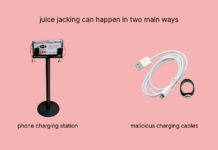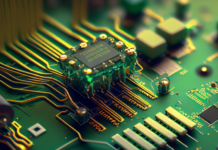The Dexcom G6 Receiver is a device that allows people with type 1 or type 2 diabetes to monitor their blood sugar levels. The device consists of a disposable transmitter that sends data from a tiny glucose sensor on the back of the user’s skin to a receiver. The receiver then displays all the necessary information for users to track and keep track of their glucose levels. It allows users to have a better understanding and overall management of their conditions.
What Is The Dexcom G6 Receiver And How Does It Work?
The Dexcom G6 Receiver is a handheld device that uses Bluetooth technology to capture and transmit data generated by the user’s glucose sensor. It connects with the transmitter which is worn on the body by means of a tiny adhesive patch. It then receives additional information from the user including their current blood sugar level, time of recording, type of activity they are participating in, and food they have recently eaten. This data is then stored on the receiver and can be accessed when needed.
Tips For Using The Dexcom G6 Receiver Effectively
- Always make sure to wash your hands with soap and water before changing the sensor or injector.
- It is important to keep the Dexcom G6 Charger and Receiver away from water and moisture to ensure proper functioning.
- Make sure the USB Cable is connected properly and securely to the Dexcom G6 Receiver and USB Wall Plug before powering it up.
- Place the Receiver away from direct sunlight and in a place with good air circulation.
- When powering up the Dexcom G6 Receiver always follow the on-screen instructions.
- To maintain accurate readings always keep the receiver at least 12 inches from any cell phone or other electronic device.
- If you are not receiving a reliable signal from the Dexcom G6 Sensor, try pressing the refresh button on the Receiver.
- Always make sure to review and check the data displayed on the Receiver before making any decisions.
- Keep the Receiver away from open flames and extreme temperatures.
- Remember to charge the Receiver at least once a day or when the battery indicator reaches one-half.
Types Of Data Stored On A Dexcom G6 Receiver
- Blood Glucose Levels
- Sensor Information
- Activity Levels
- Insulin Doses
- HbA1c Levels
- Food Logs
- Notes
- Event Marker Data
Why Should I Use A Dexcom G6 Receiver?
Using the Dexcom G6 Receiver is beneficial for diabetic individuals as it provides them with an accurate and convenient way to monitor their blood sugar levels. It also has alarms that alert users when their levels are going too low or too high. Additionally, they can access the data stored on the receiver to track their overall glucose trends and make adjustments to their insulin dosages and overall diabetes management plan.
How To Setup A Dexcom G6 Receiver
To set up the Dexcom G6 Receiver, users must first connect the transmitter to the receiver via Bluetooth. Then they can follow the user guide to calibrate the receiver for the sensor and customize settings such as alarms. Additionally, users should sign up for a free account with Dexcom to store their data and use the app to access their information.
Troubleshooting And Calibrating A Dexcom G6 Receiver
Troubleshooting a Dexcom G6 Receiver begins with a review of the user’s instructions and a troubleshooting guide to identify any errors being displayed. If errors persist, users should ensure that their Dexcom G6 Sensors are functioning properly and that the receiver’s battery is fully charged and reset. If all else fails, users may reference online guides or contact Dexcom support for additional assistance.
Calibrating a Dexcom G6 Receiver requires that users enter two values: their current blood glucose level and the corresponding reading from their receiver. Once entered, the receiver will calibrate itself to ensure accuracy and ensure that readings appear in the recommended range. It is important to realize that calibration must be performed every 24 hours for the Dexcom G6 Receiver to accurately measure blood glucose levels.
Benefits Of Using A Dexcom G6 Receiver For Diabetes Management
The Dexcom G6 Receiver is a great tool for diabetes management as it helps users stay on top of their glucose levels. By monitoring their readings and trends over time, users can make adjustments to their diet and lifestyle to improve their health. Additionally, the alarms can alert them when their levels are too high or too low. Allowing them to take action quickly to avoid any health complications.
Conclusion
The Dexcom G6 Receiver is a great tool for individuals with diabetes to help them better manage their condition. It provides accurate and real-time data that can be used to monitor one’s glucose levels. Additionally, it also has alarms that can alert users when their readings are going too high or too low. The receiver also has the ability to store data for future reference and to be used to make adjustments to one’s diabetes management plan. As a result, it is an invaluable tool for anyone with diabetes or pre-diabetes.





















